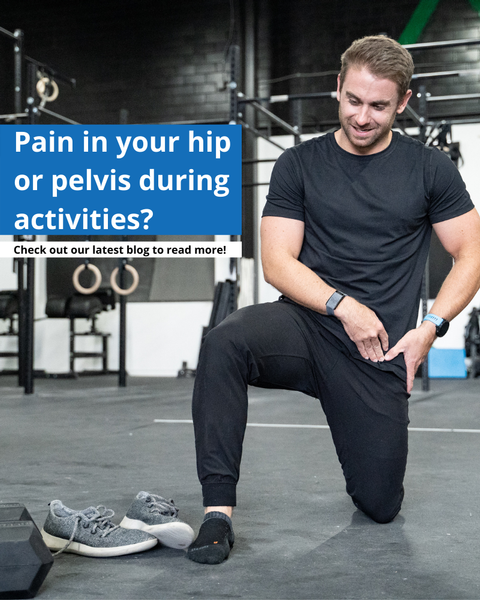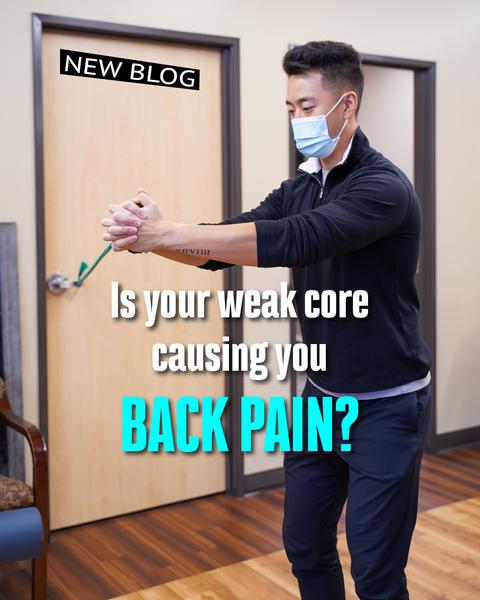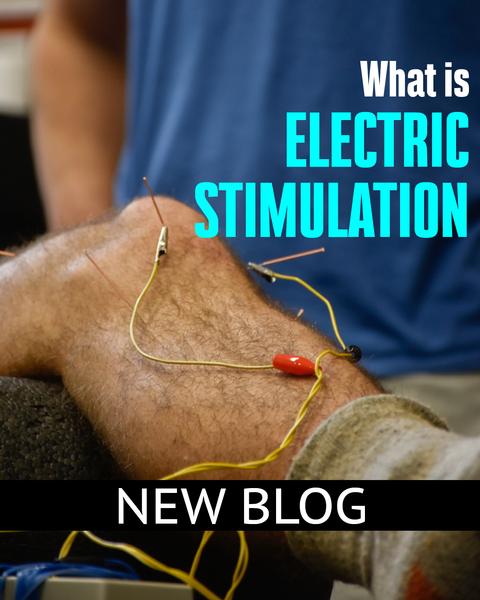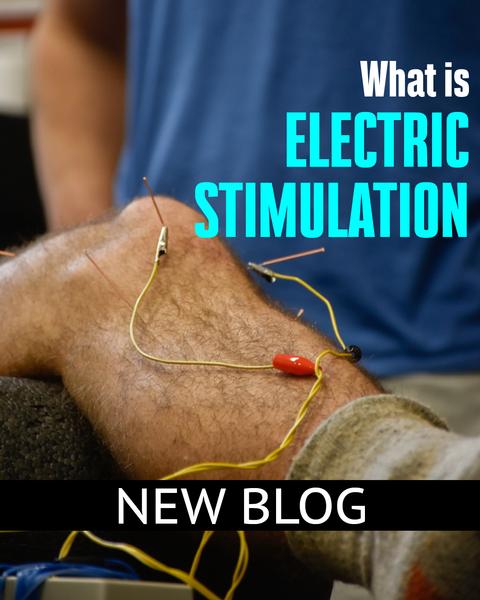Latest News & Blog
If you are having hip or groin pain with activity, it could be FAI or Hip Impingement.
By Danielle Schoenthaler - January 18, 2021
If you are having hip or groin pain with activity, it could be FAI or Hip Impingement.
Were you or someone you know diagnosed with FAI or Hip Impingement and not sure what that means?
FAI stands for Femoral Acetabular Impingement. The hip is a ball and socket joint and impingement happens when there is an abnormal rubbing between the two surfaces. This can happen based on the shape of the joint. There can be an over coverage on the socket, a miss-shape of the ball, or often a combination of both. Impingement in adolescents or young adults can lead to a tear in the labrum or cartilage which causes pain in the hip or can cause early arthritis in the joint.
Â
.png)
Physical therapy can often be a great way to treat symptoms including:
- Improving range of motion and decreasing soft tissue restrictions
- Strengthening the surrounding muscles to decrease load to the joint
- Learning to modify activities to avoid impingement.
Unfortunately, we cannot change the shape of the bone, so depending on the severity or age of the individual surgery is often required. The intent of the surgery is to correct the shape of the bone and then repair or replace the labrum in the hip. Patients are typically able to make a full return to sport or previous activities via arthroscopy (scope) surgery and following 4-6 months of rehab.
The best way to preserve the joint is to catch it early!
If you are having hip or groin pain with activity, see your local Peak physical therapist and get a diagnosis as early as possible.
Is Your Weak Core Causing You Back Pain?
By Kylie Herzog - November 3, 2020
Is Your Weak Core Causing You Back Pain?
Have you ever had low back pain that just doesn’t go away or doesn’t seem to get better?
The first thing to look at is how strong and stable your core is.
If you have a weak core, your low back can compensate in order to complete different activities. Keep in mind that your core is not just your “six packâ€, it goes all the way around your waist.
When lifting something off the floor while not activating your core, your low back will take over and you could risk a back injury. The most common lift people do wrong without the proper core engagement is a deadlift (a.k.a. picking something up off the floor). A poor deadlift is one that includes a rounded back which is the leading cause for possible strains/sprains in the tissues as well as disc issues. The same thing applies to rotating movements.Â
You could also find yourself having back pain with walking. This could happen for many reasons but the most common seems to be excessive pelvic tilt, mostly anteriorly.
What this means is that your back muscles are overactive or tight. This then causes your abdominal muscles to be lax or overly stretched and your front hip muscles to be tight as well. On the other hand, if someone demonstrates an excessive posterior tilt this would mean that their glute muscles and abdominals are going to be tight instead. Low back pain can get complicated as it is one of those things that shows symptoms with a chain reaction down the body. Your low back could be tight due to hamstring, quad or hip flexor tightness which can all be addressed by stretching.Â
One other reason that your back could be hurting is if your QL or your hip hiker muscle is overactive and is mostly seen as a “limp†when walking (pictured below).
Someone can also present with a hip hiking compensation walking pattern with other leg injuries; they do this to avoid using the injured area because of the discomfort associated with use. This compensation pattern will lead to back pain and as you can see in the picture it could radiate up into your shoulders as well.
Does any of this sound like it may fit your situation?
Check out this Instagram post for core strengthening exercises and if you still experience back pain, come see us at your local Peak Physical Therpy location so we can help!
The Shockingly Effective Results of Electric Stimulation in Rehab!
By Alex Nutter - November 4, 2020
Neuromuscular Eletric Stimulation shows rapid improvement in recovery and is shockingly effective!
Neuromuscular Electric Stimulation (NMES) and is a tool that can significantly improve the function of muscles in certain situations. Following a surgery or injury, swelling and inflammation are common. This swelling can affect the way that our nerves are able to control muscle movements and control. This is especially common in knee injuries involving the ACL (Anterior Cruciate Ligament) and Meniscus.
A Physical Therapist can use specifically directed electric stimulation in order to counter the effects of this impairment and improve the muscles ability to function. This can lead to improved ability to stand, walk, squat, and decreased pain. By appropriately activating a non-functioning muscle, our joints can move the way that they were intended. Similar to a machine with a defective gear, our body cannot function appropriately when a muscle is not doing its job to the full potential.
Â
NMES can show rapid improvements in muscular function that are visible immediately. Usually this intervention is only required for a few sessions before the muscle is able to function appropriately without external help. NMES can be used throughout the body on a multitude of muscles.Â
If you're having feelings of instability, pain, or general dysfunction? Ask your therapist if NMES might be right option for you!
Shoulder Pathology - What is Causing Your Shoulder Pain and How You Can Remedy It!
By Koren Lavi - October 16, 2020
Many types of shoulder pathologies are contributed to by decreased subacromial space. Thats the space between your arm bone (humerus) and shoulder-blade bone (scapula). The soft tissue of our body can get impinged or "pinched" between these bones causing irritation. The soft tissue that most frequently get impinged is the biceps tendon, the supraspinatus (a rotator cuff muscle), and the subacromial bursa (a fluid filled sac that acts as a cushion). Very commonly, when there is an issue with the shoulder joint, our patients often complain of aching or sharp pain in the shoulder joint. Often times these symptoms occur during overhead reaching, forward reaching, and reaching behind the back.Â
Seeking timely medical attention from your orthopedic doctor or physical therapist is critical to prevent permanent damage of these soft tissue structures. Additionally, lack of timely treatment may cause secondary issues such as stiffness, weakness, and instability of the shoulder. A lot of the time, pain and inflammation after an initial injury persists with lack of shoulder motion.Â
With these kinds of injuries the old "no pain no gain" adage DOES NOT APPLY.
First, the goal is to reduce inflammation through a combination of anti-inflammatory medications and pain-free motion. Initially physical therapy should include soft tissue mobilization to relax tight or "guarded" muscles. PT should also start by including exercises such as pendulum or Codman's exercises to temporarily increase the subacromial space (check out this post for those exercises).
During this time it is crucial to work on range of motion to combat stiffness. After inflammation and stiffness begin to subside, it is important to work on strengthening (pain-free!) to begin regaining stability in the shoulder joint.
To seek a more specific plan of care tailored to your specific needs, come in and get an evaluation from one of our licensed doctors of physical therapy!
Posture: How to Assess & Correct Your Posture to Improve Your Physical Quality of Life
By Kristi Curtis - October 12, 2020
Posture: How to assess & correct your posture to improve your physical quality of life
What is good posture
Simply put, good posture is the correct alignment of your bones so that your body can function at its highest capacity. Just like feeding your body a well-balanced diet for energy, good posture provides the body with the proper support to move in the way it’s supposed to. This decreases wear and tear on the body helping to postpone conditions and symptoms such as joint pain, arthritis, stiffness, and muscle tears.Â
Why should I care?
Posture is not something most of us think about on the day to day, and when we do, it feels more like a chore than a necessity. Unfortunately, with an increase in the usage of electronics, our postures are degrading rapidly. This is causing an increase in aches, pains, medications, surgeries, and a decrease in overall health. Poor posture can lead to issues with your breathing as it can compress your ribcage and can affect heart health. Posture is more important that you think.Â
How to assess your own posture
1. Standing in front of a mirror check to seeÂ
-
Are your shoulders even?
-
Are your toes pointing forward?
-
Is your weight evenly distributed through your feet?
2. Standing to the side in front of the mirror
-
Is your chin slightly tucked?
-
Are your shoulders inline with your rib cage?
How to improve your posture
When sittingÂ
-
Make sure your sitting up straight with a natural curve in your lower back
-
Your shoulders are down and backÂ
-
And your chin is slightly tucked
Â
This may feel strange at first but know you are on your way to a better posture.Â
Â




